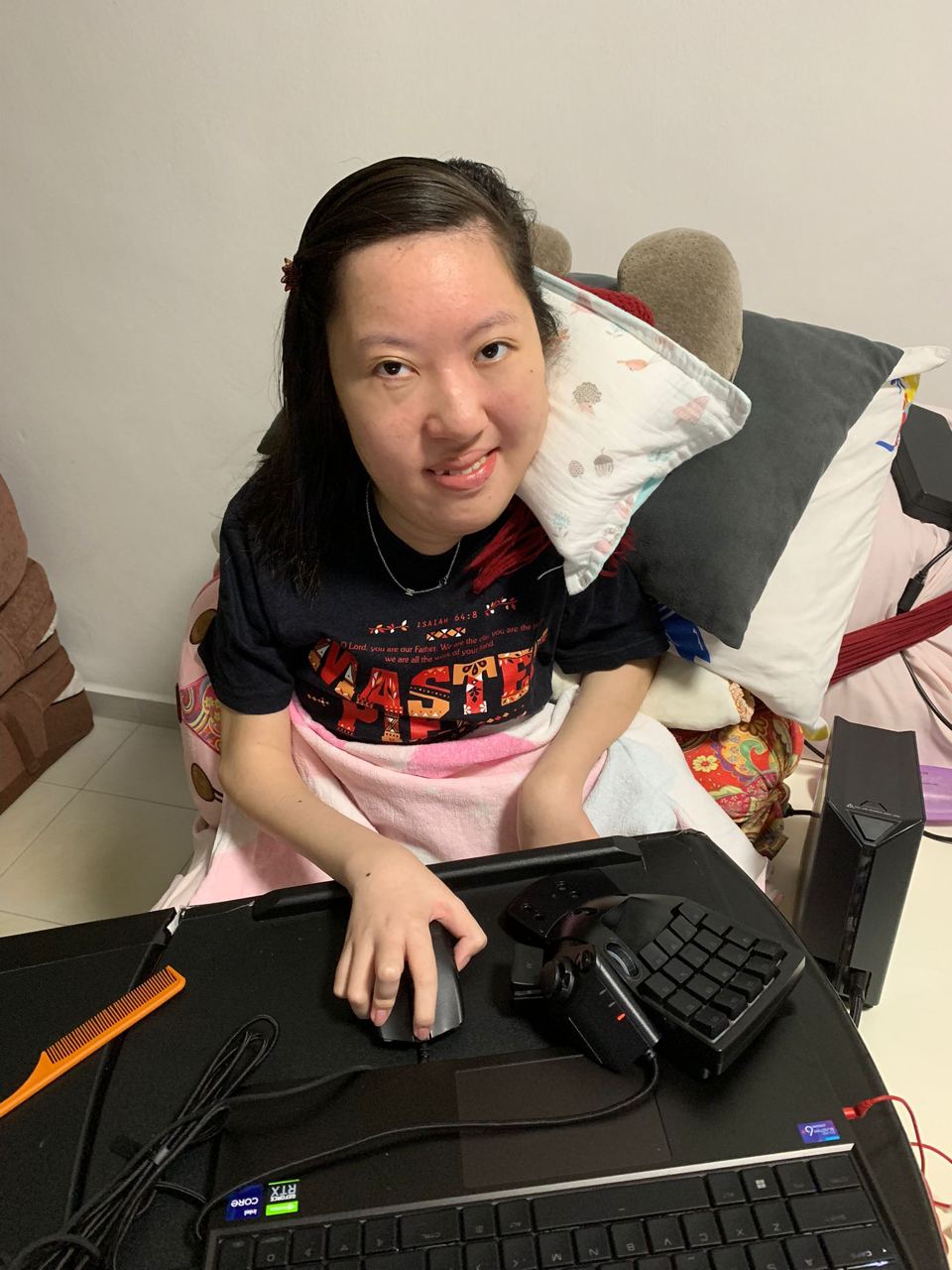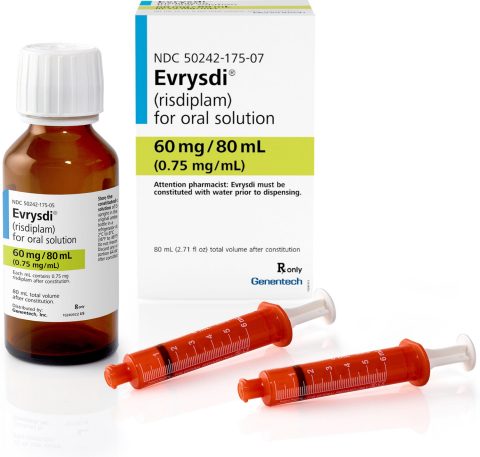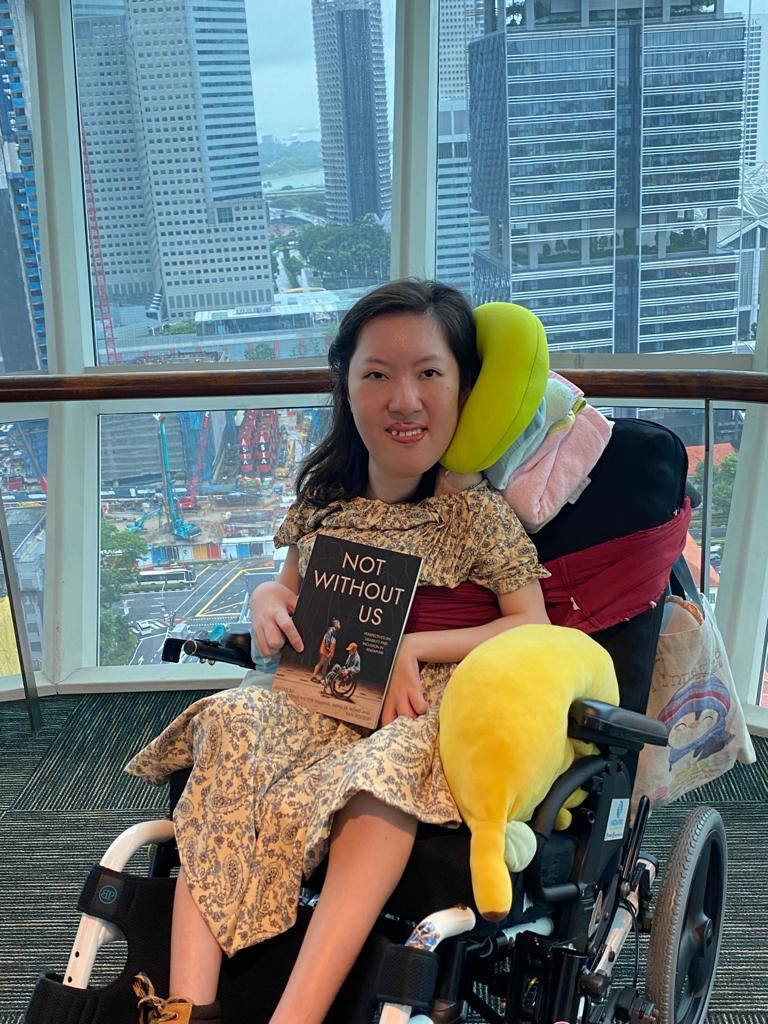Spinal muscular atrophy (SMA) is a rare genetic condition that results in muscle weakness and wasting over time.
Approved treatment options for SMA in Singapore typically come with a hefty price tag and they are currently not subsidised by the government or covered under the Rare Disease Fund.
Journalist Sherry Toh, who lives with SMA Type 2, writes about the "devastating, cruel irony" in knowing that an effective treatment option exists but remains out of reach because of its exorbitant cost.
For most Singaporeans, how muscles work and carry them throughout their lives doesn't often cross their minds.
But for patients with spinal muscular atrophy (SMA), a rare progressive disease that weakens our muscles over time — to the point that we will lose the ability to breathe on our own if left untreated — the thought crowds our minds from the second we become aware of what the disease is and how it affects us.
Sometimes it’s background noise, sometimes it’s at the forefront blocking out everything else.
But it’s always there.
A different crowdfunding experience
One year ago, I launched my Ray of Hope crowdfunding campaign for risdiplam (branded as Evrysdi), an oral drug that targets the disease’s cause and therefore reverses the progression of SMA to some extent.
The campaign has a goal of S$375,000, the cost of the prescription per year.
Six months in the making, the campaign’s vetting process was prolonged by the lack of protocol in our healthcare system for adult patients who want to receive SMA treatments that target its cause directly.
I was the first adult to push for risdiplam.
 Toh launched her Ray of Hope crowdfunding campaign for risdiplam, an oral drug to treat SMA, one year ago. Photo courtesy of Toh.
Toh launched her Ray of Hope crowdfunding campaign for risdiplam, an oral drug to treat SMA, one year ago. Photo courtesy of Toh.
My neurologists and a team of physiotherapists at the National Neuroscience Institute (NNI) and KK Women’s and Children’s Hospital (KKH) had to figure out who could assess me, how to assess me, and who could prescribe the medication as we went along.
My experience was very different from some of the infants and toddlers SMA whose parents had also set up crowdfunding campaigns on Ray of Hope.
Theirs was for Zolgensma (onasemnogene abeparvovec), a one-time infusion suited only to children under two years old, which currently costs S$2.4 million.
Because SMA is typically seen as a “paediatric” condition in Singapore and there have been several successful crowdfunding campaigns — readers may remember the babies Devdan, Shamel, Zayn, and Lucas, whose cases were featured in the news — there would’ve been less fuss surrounding their diagnostic assessments.
It was also quicker for them to achieve their crowdfunding goals; perhaps helped by the fact that they were adorable babies who needed a one-time treatment for a shot at becoming entirely non-disabled.
Whereas I’m an adult — whose condition will only improve minimally in comparison — in need of a treatment that must be consumed continuously.
A strain on mental health
Throughout this crowdfunding process, I’ve had to contend with the difficult mental health effects my disease and the campaign has had on me.
It’s a devastating, cruel irony, to know that there is a drug that can stop my body from wasting away and help me maintain my quality of life, yet it’s financially inaccessible.
It’s embarrassing to ask for financial aid from strangers in Singaporean society, where “face” is social currency.
But I have no other choice.
When my mum and I agreed to go down the crowdfunding route in 2022, we’d already exhausted multiple appeals to our healthcare system to grant me financial subsidies for risdiplam.
Each time, the denials communicated concern that the drug wouldn’t work on me due to my age (23 at the time; I’m now 25).
But having friends who were older than me and receiving risdiplam in the United States, I knew it would work.
I watched as my friends’ strength improved while I lost my ability to hold my head up and feed myself. The process made me suicidal.
A short respite
Thankfully, when the manufacturer of risdiplam — Roche — saw that my crowdfunding wasn’t gaining much traction last year, they offered a three-month trial of the drug.
My condition improved significantly.
Most notably, I stopped choking on liquids. The time it took for me to swallow 100ml of water dropped from 52 seconds to 16 seconds near the end of my trial.
It helped with my hydration and fatigue and allowed me to be more productive as a freelance journalist. In fact, I started to look for more work.
That’s not possible now because my condition has deteriorated again without risdiplam.
I say all this not to garner pity, but to communicate how hard living with SMA is.
 Toh saw her symptoms improve when the manufacturers of risdiplam offered her a three-month trial of the drug. Photo via www.evrysdi.com
Toh saw her symptoms improve when the manufacturers of risdiplam offered her a three-month trial of the drug. Photo via www.evrysdi.com
The further my disease progresses, the more complicated my care gets, the more difficult it is for me to live a fulfilling life where my nutritional, emotional, social, and career needs are met.
A feeding tube and a tracheotomy (a procedure that makes it possible to insert a ventilator tube through the neck) have frequently been suggested by my doctors as a precaution against SMA’s effects.
My disease progression also means that every hospital stay may be my last, as was the case at my most recent hospitalisation in February for a respiratory infection. The whole time, I wished I had risdiplam to help my lungs cope and help me get better quicker.
So much more to achieve
I’m hardworking and I believe there is so much more that I can achieve.
Last year, my work in video game journalism got me accepted into the Game Awards’ Future Class, a programme that selects only 50 applicants out of thousands every year. I was the sole Singaporean in my cohort.
 "I do believe all SMA patients are worthy of living a life where we don’t have to worry about our disease," said Toh.
"I do believe all SMA patients are worthy of living a life where we don’t have to worry about our disease," said Toh.
The purpose of the programme is to forward the careers of individuals the committee believes “represent the bright, bold and inclusive future of video games”.
I also had an essay on the uses of video games among disabled gamers published in Singapore’s first printed disability studies anthology, Not Without Us: Perspective on Disabilities and Inclusion in Singapore.
Furthermore, I hold a part-time job as a virtual assistant and occasionally assist researchers on a freelance basis.
It’s dreadful to wake up every day and wonder when will be the last time I can play a game or earn my keep so that I can lessen the financial burden on my parents.
But even if I wasn’t as hardworking, I do believe all SMA patients are worthy of living a life where we don’t have to worry about our disease.
Unfortunately, while the healthcare system works out a solution to make risdiplam and other SMA treatments financially accessible, crowdfunding for our treatments and raising awareness is all we can hope to succeed in.
As Nominated Member of Parliament Ong Hua Han said as he told my story to Parliament during the Commitee of Supply debate in March: I’m only trying to buy time — time to witness policy change, time to hope for a brighter tomorrow.
Editor's note: You can contribute to Toh's crowdfunding campaign here.
Parliamentary questions about the cost of SMA treatment and whether the Rare Disease Fund could cover them were answered by the Ministry of Health in 2023. You can read them here:
If you like what you read, follow us on Facebook, Instagram, Twitter and Telegram to get the latest updates.

